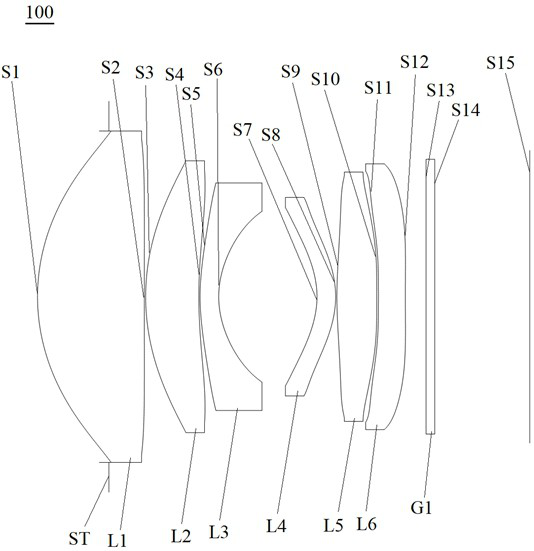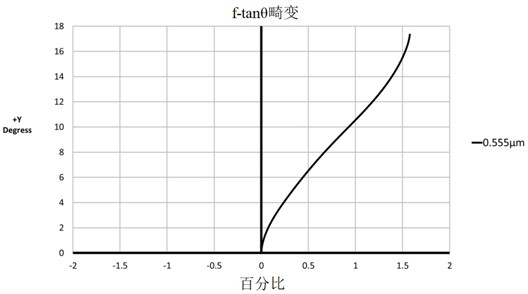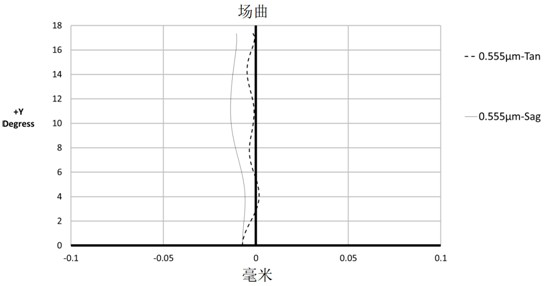Optical lens and imaging device
An optical lens and imaging surface technology, applied in the field of imaging lenses, can solve the problems of narrowing the depth of field of the lens, weakening the shooting effect, unable to clearly reflect the focused subject, etc., to achieve good imaging quality, ensure imaging quality, and meet the needs of use.
- Summary
- Abstract
- Description
- Claims
- Application Information
AI Technical Summary
Problems solved by technology
Method used
Image
Examples
no. 1 example
[0087] see figure 1 , which is a schematic diagram of the structure of the optical lens 100 provided in the first embodiment of the present invention, the optical lens 100 sequentially includes: a stop ST, a first lens L1, and a second lens L2 along the optical axis from the object side to the imaging surface S15 , the third lens L3, the fourth lens L4, the fifth lens L5, the sixth lens L6 and the filter G1.
[0088] Wherein, the first lens L1 has positive refractive power, the object side S1 of the first lens is a convex surface, and the image side S2 of the first lens is a concave surface at the near optical axis;
[0089] The second lens L2 has positive refractive power, the object side S3 of the second lens is a convex surface, and the image side S4 of the second lens is a concave surface at the near optical axis;
[0090] The third lens L3 has a negative refractive power, the object side S5 of the third lens is a convex surface, and the image side S6 of the third lens is...
no. 2 example
[0104] see Figure 5 , which is a schematic structural view of the optical lens 200 provided in the second embodiment of the present invention, the optical lens 200 of this embodiment is substantially the same as the first embodiment above, the main difference is that the image side S2 of the first lens is Convex, the object side S9 of the fifth lens is concave at the near optical axis, the fourth lens L4 has positive refractive power, and the radius of curvature, aspheric coefficient, thickness, and material of each lens surface are different.
[0105] Specifically, the design parameters of the optical lens 200 provided in this embodiment are shown in Table 3.
[0106] table 3
[0107]
[0108] The surface coefficients of each aspheric surface of the optical lens 200 in this embodiment are shown in Table 4.
[0109] Table 4
[0110]
[0111] Please refer to Figure 6 , Figure 7 and Figure 8 , showing the f-tanθ distortion curve, field curvature curve, and vertical...
no. 3 example
[0113] Such as Figure 9 As shown, it is a schematic structural diagram of the optical lens 300 provided in this embodiment. The optical lens 300 of this embodiment is substantially the same as the above-mentioned first embodiment, except that the fourth lens L4 has a positive refractive power, and the fifth lens L5 With negative refractive power, the sixth lens L6 has positive refractive power, the image side S10 of the fifth lens is concave at the near optical axis, the object side S11 of the sixth lens is convex at the near optical axis, and each lens surface type The radius of curvature, aspheric coefficient, thickness, and material are different.
[0114] Specifically, the design parameters of the optical lens 300 provided in this embodiment are shown in Table 5.
[0115] table 5
[0116]
[0117] Table 6 shows the surface coefficients of each aspheric surface of the optical lens 300 in this embodiment.
[0118] Table 6
[0119]
[0120] Please refer to Figure...
PUM
 Login to View More
Login to View More Abstract
Description
Claims
Application Information
 Login to View More
Login to View More - R&D
- Intellectual Property
- Life Sciences
- Materials
- Tech Scout
- Unparalleled Data Quality
- Higher Quality Content
- 60% Fewer Hallucinations
Browse by: Latest US Patents, China's latest patents, Technical Efficacy Thesaurus, Application Domain, Technology Topic, Popular Technical Reports.
© 2025 PatSnap. All rights reserved.Legal|Privacy policy|Modern Slavery Act Transparency Statement|Sitemap|About US| Contact US: help@patsnap.com



